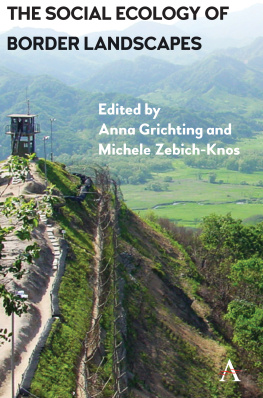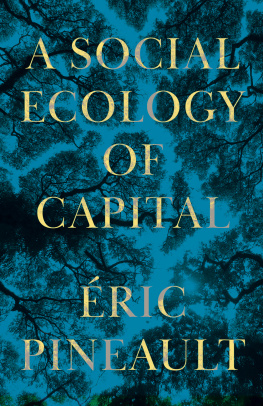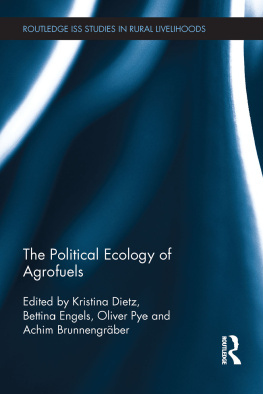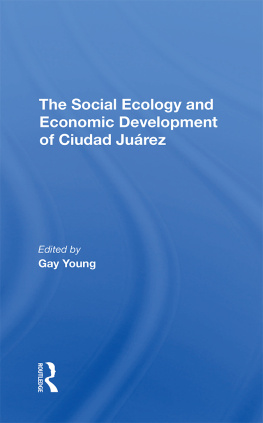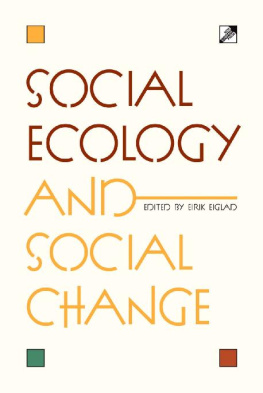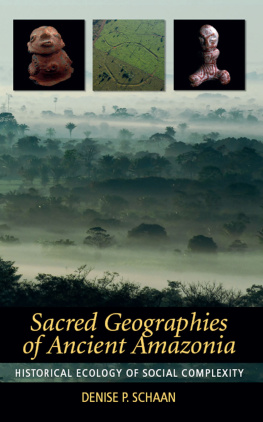The Social Ecology of Border Landscapes
The Anthem Series on International Environmental Policy and Agreements
The Anthem Series on International Environmental Policy and Agreements seeks to consolidate research on global environmental governance, providing a prescriptive policy-making agenda based on sound analysis and empirical insights. A planetary vision of environmental governance has been growing over the past several decades and is often operationalized through international environmental agreements. Even though such treaties are often nonbinding and have marginal punitive power against violators, they are gaining credibility in international relations. This series focuses on evidence-based research that helps strength the system of multinational environmental decision making and governance.
Series Editor
Saleem H. AliUniversity of Delaware, USA and University of Queensland, Australia
Editorial Board
Bharath GopalaswamyAtlantic Council, Washington, DC, USA
David LearyThe University of New South Wales, Australia
Jose Puppim de OliveiraUnited Nations University Institute of Advanced Studies (UNU-IAS), Yokohama, Japan
The Social Ecology of Border Landscapes
Edited by
Anna Grichting and Michele Zebich-Knos

Anthem Press
An imprint of Wimbledon Publishing Company
www.anthempress.com
This edition first published in UK and USA 2017
by ANTHEM PRESS
7576 Blackfriars Road, London SE1 8HA, UK
or PO Box 9779, London SW19 7ZG, UK
and
244 Madison Ave #116, New York, NY 10016, USA
2017 Anna Grichting and Michele Zebich-Knos editorial matter and selection;
individual chapters individual contributors.
The moral right of the authors has been asserted.
All rights reserved. Without limiting the rights under copyright reserved above, no part of this publication may be reproduced, stored or introduced into a retrieval system, or transmitted, in any form or by any means (electronic, mechanical, photocopying, recording or otherwise), without the prior written permission of both the copyright owner and the above publisher of this book.
British Library Cataloguing-in-Publication Data
A catalogue record for this book is available from the British Library.
Library of Congress Cataloging-in-Publication Data
Names: Grichting, Anna, editor. | Zebich-Knos, Michele, editor.
Title: The social ecology of border landscapes/edited by Anna Grichting and Michele Zebich-Knos.
Description: London; New York, NY: Anthem Press, 2017. | Series: Anthem series on international environmental policy and agreements | Includes bibliographical references and index.
Identifiers: LCCN 2017005635 | ISBN 9781783086696 (hardback)
Subjects: LCSH: Social ecologyCase studies. | BorderlandsSocial aspectsCase studies. | BISAC: POLITICAL SCIENCE / Public Policy / Environmental Policy. | SOCIAL SCIENCE / Human Geography. | ARCHITECTURE / Urban & Land Use Planning.
Classification: LCC HM861.S626 2017 | DDC 304.2dc23
LC record available at https://lccn.loc.gov/2017005635
ISBN-13: 978-1-78308-669-6 (Hbk)
ISBN-10: 1-78308-669-6 (Hbk)
This title is also available as an e-book.
CONTENTS
| Emmanuel Brunet-Jailly |
| Kevan Zunckel |
| Hilary Cunningham and Stephen Bede Scharper |
| Todd Walters and Saleem H. Ali |
| Hall Healy, George Archibald and Arthur H. Westing |
| Lily A. House-Peters |
| Anna Grichting |
| Rabih Shibli |
| Sylvaine Bulle |
| Brendan Murtagh |
| Carol Birrell and Stuart B. Hill |
| Paulo Tavares |
| Verena Andermatt Conley |
| Michele Zebich-Knos |
Figures
| Life-zoning diagram. Leslie R. Holdridges ecology of Perus territory |
| Land taxonomy. (a) Cover from Mapa Ecolgico del Peru showing Leslie Holdridges diagram (1995) and (b) extracts from the descriptive guide accompanying the life-zoning map of Peru |
| Ecology coded by law. Map of Perus land-use potential |
Tables
The idea for this book came out of the 2011 Conference on Environmental Diplomacy and Security in International Relations organized by the Institute for Environmental Diplomacy and Security (IEDS) at the University of Vermont (USA). Burlington, Vermont, is a small city nestled in the Vermont heartland and is also home to the founder of social ecology, Murray Bookchin. At the time, the university was also home to professor and IEDS director Saleem Ali, author of the highly acclaimed book Peace Parks: Conservation and Conflict Resolution. Without his encouragement and support, The Social Ecology of Border Landscapes would surely not have materialized. I should add that these inspirational events, institutions and scholarship took place within very idyllic local surroundings. Vermont borders Quebec, Canada, and, in Burlington, I found French-Canadian influences everywhere, from the food (poutine) to the bilingual, English-French language signs at the airport.
While certainly different from my current living arrangement near the Pacific Ocean in Southern California, the area and the conference sparked my interest in creating a book about borders and their relation to both the built and natural environments, but it was Anna Grichtings actions that turned this idea into reality. Selection for our conceptual framework was obviouswe would approach the topic from a social ecology perspective to illustrate that scholars and practitioners must never lose sight of the human drivers that shape borders, whether they abut a peace park, desert, fence or refugee camp. The book would be multidisciplinary and incorporate my perspective as a political scientist with Annas expertise in architecture and planning. Naturally, it would include scholars and practitioners whose background and knowledge base are different from our own. It would also challenge readers to think out of the boxwhich is why we felt compelled to include a cognitive-border case ( often result from conflict and serve as coping mechanisms.
One of my favorite natural environments in Southern California is the Tijuana Estuary National Wildlife Refuge and Tijuana Slough, a salt marsh plain with tidal channels that extends south from San Diego to the Mexican border. This area covers 2,800 acres and is home to more than 370 bird species. While not the most scenic spot in California, for me as a political scientist and scholar of global policy, this area represents the notion that nature knows no borders. The impact of Mexico and its ongoing brush with border poverty is something that the estuary must deal with on a daily basis. It is especially problematic when hard rains wash sewage and trash from settlements on the bluffs down Tijuanas steep canyons on the Mexican side of the border and flow nearly unabated into the estuary and marshlands. While the marshlands happen to be on US territory, they arefirst and foremostmarshlands within the areas natural ecosystem. The cities of San Diego to the north and Tijuana to the south sandwich the marshland between two urban environments and reinforce its in-between status.
Not only is the Tijuana Estuary a sage scrub ecotoneor transitional area between two ecosystemsfrom a biodiversity standpoint, but it also represents a useful example of cross-border cooperation to manage the impact of Mexicos pollution on US marshlands and coastal areas. Sewage contamination is an old issue and cross-border management began in 1934 when the United States and Mexico asked the International Boundary Commission to prepare a report on Tijuanas sewage problem. Today the South Bay International Wastewater Treatment Plant (SBIWTP), built in 1990 just two miles west of the San Ysidro port of entry on the US side, is a joint effort in which both countries share operation and maintenance. Initial costs were also a shared effort; Mexico and the United States contributed USD $16.8 million and $239.4 million, respectively, according to the U.S. Fish and Wildlife Service.
Next page
